Young children are natural scientists. From birth, they are curious and use their senses to explore their surroundings. Around the age of three years, children begin to organize their sensory impressions by developing interests to make use of knowledge in meaningful ways. This natural curiosity combined with their keen interests in the world around them, make STEM education for preschoolers a very interesting phenomenon.
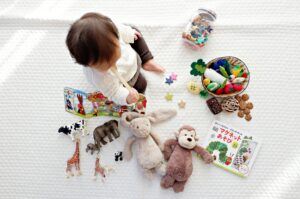
Shitota Yuri
STEM stands for science, technology, engineering and math. STEM education is very important for all individuals who are part of the 21st century. STEM knowledge is used to determine how well an individual and country will be able to generate ideas to translate into innovative ways to solve problems now and in the future. Do preschoolers naturally develop the foundation for STEM? If so, what is there for them to think about and to do? How can teachers, parents and families be intentional about STEM education for preschoolers?
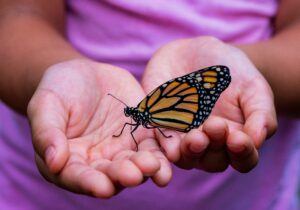
David Clode
Why Preschoolers?
Preschoolers are within the most sensitive period of development. This is the period in which they build a strong brain to secure a firm foundation for learning. The foundation laid at the early stages lead children to succeed in later years. Preschoolers at this critical stage of their development want to move, choose and express their ideas. Their freedom to explore the world around them through their senses is most important for learning.
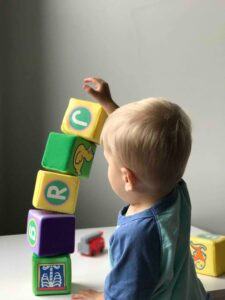
Ryan Fields
Preschoolers possess a natural inclination for STEM learning. This is because they are inquisitive and have a unique desire to thoroughly investigate their environment and everything that is a part of it. They continuously question and want to know “why” things happen as they do in their world. What are you doing? They observe keenly how things are done and how objects behave. Preschoolers try to do things over and over again if they have interest or enjoy doing it. They try to create and even use objects to represent things in the real world to solve problems. This is truly the scientific method and play is the lab they use to carry out their inquiries.
Provide Opportunities for Learning
It is the duty of parents, teachers and families to create a stimulating environment for preschoolers to capture the data from their discoveries. This must be very intentional if we are going to drive learning and get desired outcomes in this science-tech-engineering and math era. The first step in achieving this is by providing preschoolers with a developmentally appropriate environment to build the foundation concepts and skills for learning STEM.
This developmentally appropriate environment is fitted with the tools and experiences for preschoolers to learn through the senses.
Visual sense – is what preschoolers see and perceive. Their visual perception allows them to recognize and classify objects, colors, shapes and patterns in their environment. Preschoolers use their visual perception to think and imagine after observing and taking keen note about what is happening and not happening.
Tactile sense– preschoolers sense of touch or feeling. The tactile sense is developed by allowing preschoolers to manipulate a wide range of tools, objects, books, toys made of different materials which allow for texture and touch discrimination.
Auditory sense– preschoolers ability to hear diverse sounds and discriminate them.
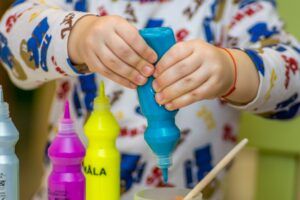
Dragos Gontariu
Language is the main tool of communication. Preschoolers use language as well as actions to convey how much they are learning and what they have interest in. By providing tools for play, preschoolers develop their motor and sensory skills and build the foundation for STEM learning. By using their fingers to pick up small objects, preschoolers strengthened their fine motor actions. This action is termed ” eye-hand – co-ordination.” This is the same skill they will need to move a mouse and point a cursor to an object on a computer screen.
Preschoolers also develop and use their gross motor skills when they are engaged in activities using large muscle movement and balance. Gross motor skills are used for pushing, pulling, tugging and building. Now you realize why they enjoy running, hopping, skipping, jumping and playing on the play ground. A wide range of STEM concepts and skills are learnt and developed by preschoolers when adults feed their interest.
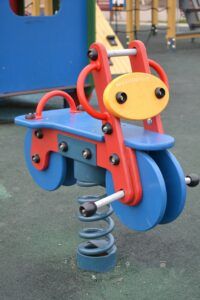
Kira Liya
Disclosure-This page has affiliate or referral links. As an Amazon Associate I earn from qualifying purchases. This means I receive a small commission if you decide to click through and buy anything. This is at no extra cost to you but helps me to maintain my website. The information in this post is based on research and my professional experience. I am not paid for my opinions, suggestions and or recommendations. I take the time to research resources and make them available to you. I never recommend poor-quality products or create false reviews for sales. You are free to make your own decisions when purchasing. Full Disclosure
Generate Interest in STEM (ST)
Many seeds of interest and knowledge can be sown in the mind of preschoolers by adults for STEM learning. Preschoolers must develop and have the foundation STEM skills of observation, critical thinking, problem solving, analysis, judgement, innovation, creativity, communication and collaboration. From the use of diverse tools and media, preschoolers develop and enrich their experiences, skills, concepts and conceptual framework in science and technology.
Science– Give preschoolers the opportunity to practice basic science skills in their environment. The environment includes, home, preschool playground, park, supermarket just about anywhere you take them. The tools within the environment include, their experiences, toys, objects, books and the natural world. This is a huge environment with millions of STEM lessons to be learnt. From engaging in multiple play activities and every day routines, preschoolers are learning about science.

Srinivas Bandar
Adults must be intentional in scaffolding preschoolers learning so that they acquire the basic science skills of observation, prediction and using evidence to support their responses to questions asked. We want preschoolers to be critical thinkers so that they can use their observation and creativity to solve problems.
There is so much science in the natural world that preschoolers have interest in. There are trees, flowers, animals, weather, water and colors just to name a few. Adults can talk about the weather with preschoolers. Through observation, let them tell how people dress for the weather. Create a weather chart. Let them put a symbol to indicate what the weather is. What are some things people do when it is raining and why? Let them predict what they think the weather will be the next day.
Here is a great science activity watching caterpillar turning into butterfly.
Insect Lore Butterfly Garden: Original Habitat and Live Cup of Caterpillars with STEM Butterfly Journal – Life Science & STEM Education – Butterfly Kit
Talk about animals living in different parts of the world and what the weather is like there. Let preschoolers match clothing worn to the weather conditions. Let them tell you why a rain coat is worn when it is raining. Watch the weather report together. Teach them the names of tools, objects, trees and animals by playing simple game as “I spy. ”
Read stories to them that tell them about people and things in the world. Take them to the zoo, museum and park and let them see and interact with the real world. Give them opportunities to speak freely about what they are doing. They are eager to tell you what they learn and what new ideas they have. Ask them questions to test their hypothesis. “So what do you think will happen if …?” “Let us see if you do that what will happen?”
Technology – Let preschoolers explore the diverse tools, machines and devices within their environment. Our current preschoolers are citizens of the Gen Z world. Therefore, they must be digitally literate and technologically savy to take their rightful place in society. There are a number of basic tools they will need to use such as scissors in developing motor coordination.
They should be able to manually cut and paste, tear and rip things, use basic tools such a toothbrush, comb, hair brush, cup, spoon and fork. Use simple machines such as the telephone, refrigerator, have an understanding of how the microwave, oven and cooker work. There is so much technology around them it is so amazing! Then, there are the current innovations of their generation- tablets, smart phones, personal computers computerized toys, games and digital books.
Adults can give children the opportunity to use these tools in a variety of ways. Let preschoolers tell what tools are best for doing different tasks and why ? If we want to save on time, which tools would be better to used to help in completing tasks. Teach them about computers and how to use them. Let them type new words and create their word folder, create their animal folder and learn things about people, animals and objects through research. Adults can show them videos about things and people of interest. Preschoolers can use digital camera to take pictures of family special events and keep a digital album. They can use smart phones to communicate with family and friends using voice and video from across the world. In essence, preschoolers must be able to learn how technology help us to solve problems and think of new ways technology can be used to solve problems.
Generate Interest in STEM (EM)
As adults generate preschoolers’ interest in STEM, preschoolers become more familiar with the concepts and skills needed to build their confidence and abilities in STEM now, and in the future. STEM learning is very much integrated during the preschool years as learning in each strand overlaps. This is an advantage; when preschoolers are engaged in STEM activities the foundation concepts are utilized in all four areas.
Engineering – Preschoolers can learn engineering concepts and skills when given the opportunity to interact with multiple materials, manipulate cause and effect toys, blocks, toys with wheels, computer games, robots and remote control devices. Engineering activities include engaging preschoolers in creative activities such as building objects using a variety of materials such as card board, newspaper, fabric, plastic containers and wood. Preschoolers naturally enjoy stocking objects.
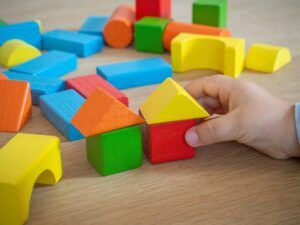
Michal Bozek
They watch and laugh as blocks tumble from high towers they build. Preschoolers have interest in objects with unique texture and design. They will find a bottle and use it for a tool. Adult must be intentional in asking them questions about their construction play and related cause and effect actions. Since, it is recommended to take preschoolers to places of interest, adults may ask them to make a model of the park or play ground. It is fascinating to watch them use material of diverse media to create a model.
Preschoolers use objects in their daily activities to represent things in the real world. Therefore, creating models of things in the real world is something preschoolers are very much interested in. Adults should let preschoolers have an appreciation as to why selected materials are used to make some objects even their shoes and clothes. Preschoolers engineering skills can be developed through intentional tasks.
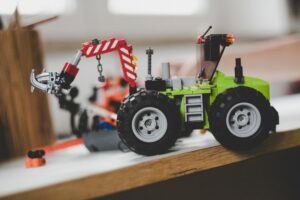
Markus Spiske
The Three Little Pigs is a well -liked story by preschoolers. Adults can scaffold their learning and acquisition of engineering skills by allowing preschoolers to create models of the three houses. Questions may be asked to ignite their critical thinking and problem solving skills in order to influence their innovation.” What material would you use for the first little pig’s house ?”
” Can you made a model from the material?” Then, there can be the discussion about the type of structure, the durability of the material and safety of the pigs. There can also be discussion in finding a solution to have the three little pigs living at the same location. For example, building an apartment complex so the pigs could stay together and have gated community for safety .
Math– Research shows that preschoolers who have a strong foundation in math are likely to be high achievers in math and reading later in school and are likely to choose a STEM career path. Preschoolers’ math skills are the bedrock of STEM learning. Math concepts are needed to have an appreciation for learning STEM and in daily life. Simple concepts in math for preschoolers include, knowing and manipulating numbers and their properties, counting, measurement, spatial relations, shapes, colors and patterns.

Preschoolers have a unique interest in math. They talk about numbers in their every day conversations. They hear numbers in songs, stories, they observe them all around them on keyboards, stove, microwave, telephone, sign posts, on vehicles, buildings and just about everywhere. Adults must teach preschoolers to count and to learn symbols for numbers. Math uses symbolic representation in its communicative language. Preschoolers need to learn symbols, shapes and pattern to make meaning as they explore the world around them.
If we go back to the story of the Three Little Pigs. We can find some basic math concepts to teach from the story. Preschoolers will be able to learn the symbol for the number three, the quantity of three, the category “pigs” that make up the number. They can learn about measurement in talking about how to construct the model houses, learn concepts about size and height and spatial relations. Preschoolers will be able to learn the pattern of order such as, the first little pig, the second and third little pig. They can make assumptions about which pig is oldest and which is the youngest. They can talk about events in the story in a chronological order as to what happen first then next, at the beginning and at the end.
Take-A-Ways
STEM education for preschoolers is an interesting phenomenon. Preschoolers possess a natural inclination for STEM learning. STEM education for preschoolers involve preschoolers exploring the world through their senses. Preschoolers exploration includes observing how things, objects and people behave, asking questions, making predictions, assumptions, manipulating objects and materials, formulating judgement in order to develop STEM concepts and skills.
Play is the lab used by preschoolers to carry out their inquiries. Parents, teachers and families are encouraged to use diverse tools, materials, books, toys and games that are developmentally appropriate to foster preschoolers STEM learning. When we secure a strong STEM foundation at an early age, this will lead to success in future learning and assurance of a competent future workforce to fill STEM jobs.
I am sure you are motivated to get your children on the right path to STEM learning. Please feel free to leave your comments, concerns, opinions and or questions. I will be happy to get back to you as soon as possible.
Tracy-Ann Morgan-Smith, PhD, JP

